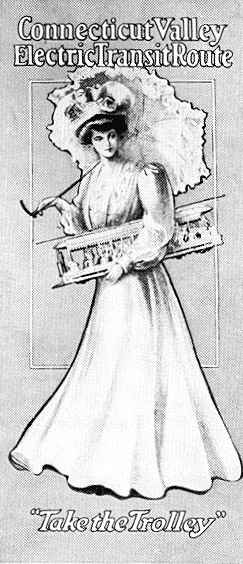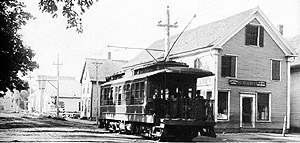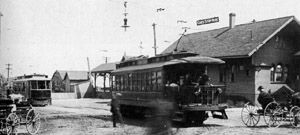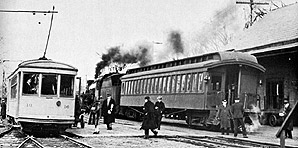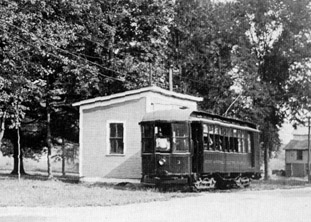
The Interurban In New England
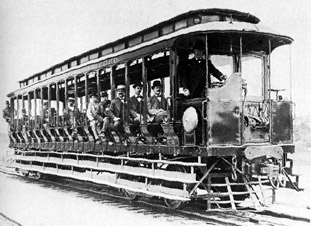
Primary emphasis on passenger service?: Yes
Heavier and faster equipment than streetcars?: No
Operation on streets in cities, sides of highways or private rights-of-way in rural areas? No
According to some sources, very little rail traffic in New England could be considered "interurban." According to others the New England lines were just interurbans that never finished evolving. This is because, for the most part, New England lines were limited by both their line infrastructure and the cars they used. The cars were smaller and, seasonally, open-air cars were most common.
"Almost all the scores of lines were built to standards more appropriate for street railways, and the true high-speed interurban of Midwestern practice was a rarity. Instead, the New England electrics wandered leisurely along on lightly constructed trackage that followed rural roads, or sailed over hill and dale" (Middleton 74). Because these were essentially streetcars that traveled from town to town they were commonly known by the more urban name of "trolley" (note the advertisement to the right).
These trolleys began operation in the 1890s. Although limits such as speeds of only 15 miles per hour made the New England interurbans less practical for most purposes than those elsewhere, they did serve certain purposes. For example, the Springfield Terminal Railway (below, right) shuttled passengers and cargo between Springfield, Vermont, which was not served by steam railroad, and Charleston, New Hampshire. This system connected an otherwise isolated area to the entire eastern seaboard. The last trolley to serve this purpose, it ceased passenger service in 1947.
